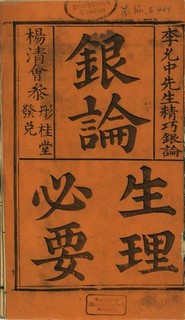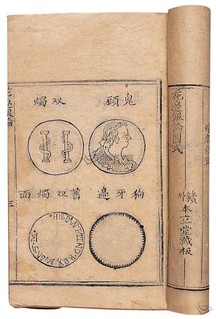
PREV ARTICLE
NEXT ARTICLE
FULL ISSUE
PREV FULL ISSUE
CHINESE GUIDES FOR IDENTIFYING SILVER DOLLARSHelen Wang of the British Museum publishes the Chinese Money Matters blog. A recent post describes merchant manuals used to identify Mexican silver dollars and other
foreign coins in circulation in China. Here's a short excerpt - seethe complete article for much more. -Editor
Abstract of von Glahn’s article: ‘Both the physical qualities of different types of money and the cultural values assigned to them contributed to the determination of their economic value. China
began to import substantial quantities of silver coins from Europe as early as the sixteenth century, but it was around 1800 that a foreign coin, the so-called “Carolus peso” issued by the Spanish
kings Carlos III and Carlos IV, became the basis of a new monetary standard in China, the yuan. In the nineteenth century the Carolus peso and imitations of it (mostly manufactured in China) served
as the principal means of exchange, and the yuan as the standard unit of account, in the markets of South China. This paper analyzes the monetary conditions that led to the establishment of the
Finds of Mexican silver dollars are reported in Chinese numismatic journals, and sometimes make a splash in the local press: see, for example, the hoard of hundreds of silver dollars found in Longhai Village (Fujian province), in 2011, which Gary Ashenkazy highlighted on his blog Primaltrek. To read the complete article, see:  Wayne Homren, Editor The Numismatic Bibliomania Society is a non-profit organization promoting numismatic literature. See our web site at coinbooks.org. To submit items for publication in The E-Sylum, write to the Editor at this address: whomren@gmail.com To subscribe go to: https://my.binhost.com/lists/listinfo/esylum All Rights Reserved. NBS Home Page Contact the NBS webmaster 
|

